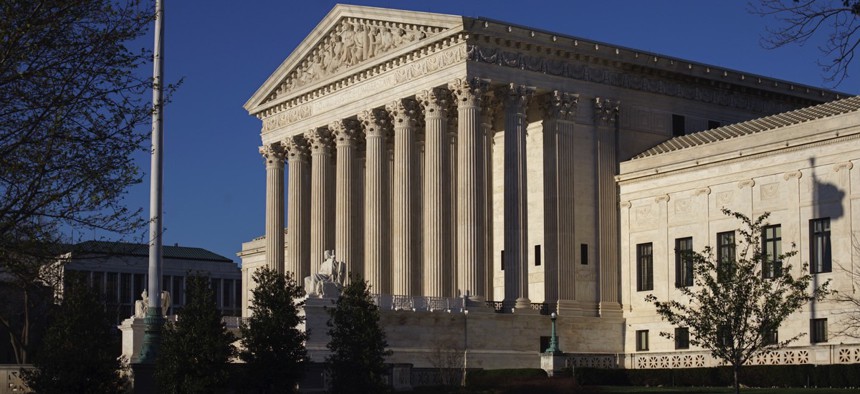U.S. Supreme Court Strikes Down North Carolina’s Congressional District Map

The U.S. Supreme Court J. Scott Applewhite / AP Photo

Connecting state and local government leaders
Also in our State and Local Daily Digest: Pittsburgh sours on Uber; Colorado governor signs measure for ‘Rolling Coal’ fines; and Western states see jump in arrests of undocumented immigrants.
GERRYMANDERING | The U.S. Supreme Court found race was too big a factor in the redrawing of North Carolina’s 2011 congressional districts, necessitating the creation of new maps. Gerrymandering handed Republicans 10 of 13 state congressional districts while underrepresenting black voters. Redistricting occurs every 10 years after the Census. “Once again with this victory the courts have said that the North Carolina General Assembly through apartheid-type redistricting engaged in systemic racism and cheated to win elections,” said Rev. William J. Barber II, head of the state NAACP that brought the case. “Over and over again our unconstitutionally constituted General Assembly is being proven to be the antithesis of justice, true democracy and the fundamental principles of equality.” [The News & Observer]
UBER | Nine months into Uber’s effort to test self-driving vehicles in Pittsburgh, there’s tension building between the city and the app-based ride-booking company. Among the criticism residents and city officials have leveled against Uber: the company is now charging for rides in autonomous vehicles, it withdrew support from the city’s application last year for a $50 million federal grant, and jobs with the company are not materializing as promised. “When it came to what Uber and what Travis Kalanick wanted, Pittsburgh delivered,” Pittsburgh Mayor Bill Peduto said. “But when it came to our vision of how this industry could enhance people, planet and place, that message fell on deaf ears.” [The New York Times]
ROLLING COAL | Colorado Gov. John Hickenlooper says he’ll sign a bill into law that will let police fine drivers $100 for “rolling coal.” The politically charged practice involves people who modify diesel pickup trucks so that when they step on the gas a vehicle’s exhaust will belch a thick plume of black smoke. In recent years, pedestrians, people driving Priuses, cyclists, Hillary Clinton supporters, and others have been blasted with the sooty plumes. “Coal rolling is a cruel cut to people with asthma or other respiratory issues,” Hickenlooper said. “We are well to be rid of it.” New Jersey has outlawed rolling coal as well. [The Denver Post]
IMMIGRATION | Across a four-state region in the west, the arrest rate for undocumented immigrants suspected of “noncriminal” offenses or immigration violations more than tripled in the early months of 2017, compared to last year. Agents with a Salt Lake City-based U.S. Immigration and Customs Enforcement regional office detained 245 noncriminal immigrants between Jan. 20 and April 29, compared to 75 arrests during a similar time period in 2016. The region includes Utah, Idaho, Nevada and Montana. [The Salt Lake Tribune]
CITY HALLS | The Honolulu Salary Commission has recommended a 5 percent pay increase for top city officials, including the mayor, council members and police and fire chiefs. Mayor Kirk Caldwell declined his pay increase in 2013 and 2014 “citing the sacrifices civil servant employees had made with smaller contract raises during lean economic years preceding his first term.” [Honolulu Civil Beat]
In Hartford, South Dakota, there’s a case of no news is good news. After a tumultuous period of city hall acrimony that started with the elimination of the economic development director’s position but led to a failed mayoral recall effort and email scandal, there’s been relative quiet recently. “There’s been a few people that have brought that up here time to time, they’ll say ‘things must be going pretty well here, I haven’t heard anything lately’,” according to Mayor Jeremy Menning. “So I think that’s a good thing.” [KDLT-TV]
For the second time in seven days, a person overdosed at a bus stop in front of city hall in Newark, Delaware. [First State Update]

NEXT STORY: New Series: The Geography of Disaster Risk and Resiliency in America




